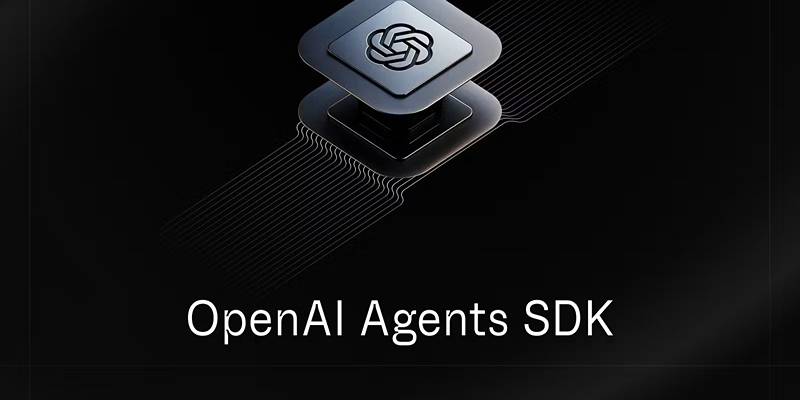As artificial intelligence continues to shape modern applications, OpenAI provides tools that make AI integration simpler and more accessible. Two of its most practical resources—the Responses API and the Agent SDK—are designed for developers aiming to add intelligent behavior to apps, chatbots, assistants, and services.
This post offers a clear, step-by-step guide on how developers can use these tools, even with minimal prior AI experience. Whether building a support assistant or a smart workflow tool, learning how to implement these tools can elevate any project with the power of natural language understanding and decision-making.
What is the OpenAI Responses API?
The OpenAI Responses API is a streamlined method for generating AI-driven responses in applications. It allows developers to send messages to a model like GPT-4 and receive smart, conversational replies. Unlike traditional API calls that require heavy setup or detailed message history tracking, the Responses API handles much of the complexity. It’s built for simplicity, and developers can focus more on functionality and user experience rather than managing the AI model’s memory or formatting output.
Key Benefits of the Responses API
The Responses API is ideal for those building chat interfaces or dynamic content generators. It provides several key advantages:
- Minimal configuration: Send a message and receive a response.
- Context-awareness: Maintains conversation flow within sessions.
- Integration-ready: Easily plugs into chat UIs, mobile apps, or web tools.
- Tool support: Can be paired with tools and functions for advanced interactions.
Understanding the Agent SDK

OpenAI’s Agent SDK is designed to help developers create powerful AI agents that can reason, use tools, and remember interactions. While the Responses API focuses on generating replies, the Agent SDK adds a layer of logic and capability.
With the Agent SDK, developers can build assistants that handle complex tasks—like searching, booking, calculating, or even interacting with APIs. It offers the structure needed to go beyond basic conversations and create intelligent decision-making agents.
How They Work Together
The Responses API and Agent SDK are most powerful when used together. The Responses API handles fast, reliable conversation, while the Agent SDK manages the logic, memory, and tools that give AI agents depth and usability. Together, they form the foundation of modern AI-driven applications that feel natural, intelligent, and helpful.
Getting Started: Tools You’ll Need
Before building with these tools, a few basic items are necessary:
- An OpenAI account and API key
- Python installed (recommended version 3.8+)
- A basic understanding of Python programming
- A code editor such as Visual Studio Code or PyCharm
Once these are ready, developers can start integrating OpenAI features into their projects.
How to Use the Responses API: Step-by-Step
Install the OpenAI SDK
To start, install the OpenAI Python package using pip:
pip install openai
Authenticate with the API Key
Developers must use their OpenAI API key to authenticate:
import openai
openai.api_key = "your-api-key"
Send a Message and Get a Response
Here’s a basic example to demonstrate how a developer can get a reply from the model:
response = openai.ChatCompletion.create(
model="gpt-4",
messages=[
{"role": "user", "content": "Explain how photosynthesis works."}
]
)
print(response['choices'][0]['message']['content'])
The result will be a clear, natural explanation of photosynthesis generated by the AI.
Adding Function Calling to the Responses API
The Responses API also supports calling external tools using function calls. It allows developers to link AI replies to real-world data or services.
For example, a function that returns weather data might look like this:
def get_weather(city):
return f"The weather in {city} is sunny and 24°C"
This function can be registered and called by the AI, enabling it to respond with real-time information.
How to Use the Agent SDK: Step-by-Step
The Agent SDK allows for more advanced logic and tool use. Here’s how to set it up and run a simple agent.
Install the SDK
The OpenAI SDK includes agent capabilities:
pip install openai
Define the Agent (Assistant)
Using the SDK, developers can create an assistant with custom instructions:
from openai import Assistant
assistant = Assistant(
name="SupportBot",
instructions="You help customers with order-related questions.",
tools=[],
model="gpt-4"
)
Run the Agent in a Loop
A simple interactive chat loop might look like this:
while True:
message = input("User: ")
reply = assistant.run(message)
print("Assistant:", reply)
This structure allows the assistant to engage in a natural back-and-forth conversation.
Real-Life Applications and Use Cases
These tools aren’t just theoretical—they’re already powering apps across various industries. Here are some real-world examples:
- Customer Support: AI agents that handle refunds, queries, and returns.
- Healthcare: Virtual assistants that provide basic symptom checks.
- Education: Tutors that help explain topics and provide practice questions.
- Finance: Assistants that offer budgeting tips or investment insights.
- Productivity: Smart tools that summarize documents, generate emails, or schedule meetings.
By combining memory, tools, and language understanding, these applications can significantly boost user satisfaction and reduce manual workload.
Best Practices for Working with Responses API and Agent SDK
To ensure smooth development and better AI performance, developers should follow some key practices:
- Write clear instructions: The more specific the guidance, the better the AI’s replies.
- Use consistent input formats: Helps the model understand and respond accurately.
- Log interactions: Useful for debugging and improving behavior over time.
- Test with real users: Helps discover what works and what needs refining.
- Watch token usage: Each message consumes tokens, which affect both cost and response length.
Tips for Beginners

For those just starting with AI tools, the following tips can help simplify the journey:
- Start with small experiments—like a basic Q&A bot.
- Use examples from OpenAI documentation to guide structure.
- Focus on one goal first (e.g., summarizing text or answering FAQs).
- Gradually add tool use and memory as comfort grows.
Learning by building small, focused projects is the most effective way to gain confidence.
Conclusion
The combination of OpenAI’s Responses API and Agent SDK offers developers an accessible yet powerful framework for creating intelligent, responsive applications. These tools handle the heavy lifting of AI interaction—language understanding, conversation flow, and tool integration—so that developers can focus on creating great user experiences. From customer service bots to smart productivity assistants, the possibilities are endless. With just a few lines of code, developers can transform their apps into smart, helpful companions ready to engage users and solve real-world problems.











